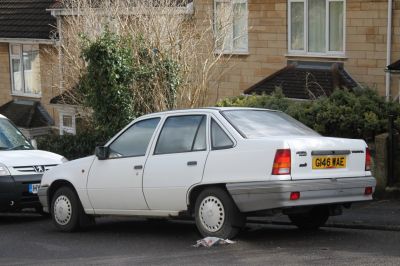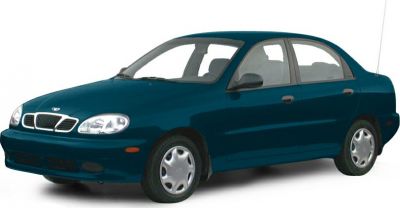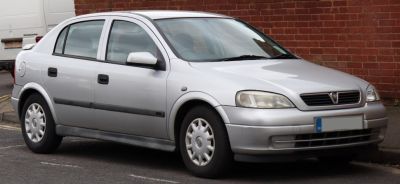 1984 Opel Kadett E Dimensions, Size & Specs
1984 Opel Kadett E Dimensions, Size & SpecsMeasurements of the 1984 Opel Kadett E, engineered for optimal performance and comfort
| Dimensions | |
|---|---|
| Length: | 4218 mm166.1 in13.8 ft |
| Width: | 1658 mm65.3 in5.4 ft |
| Height: | 1400 mm55.1 in4.6 ft |
| Trunk Capacity: | 550 liter19.4 cu ft |
| Trunk Capacity (Max): | 890 liter31.4 cu ft |
| Weight Specifications | |
| Curb Weight: | 865-1005 kg1907-2216 lbs |
| Maximal permitted Weight: | 1355-1485 kg2987-3274 lbs |
| Tire Specifications | |
| Rims Sizes: | 13-inch rims:
|
| Tire Sizes: |
|
The Opel Kadett E, produced from 1984 to 1993, represents the fifth and final generation of the popular Kadett model. This generation was primarily offered as a sedan, known for its practical dimensions and efficient use of space, catering to families and everyday drivers seeking a reliable and compact vehicle.
Dimensionally, the Opel Kadett E measures 4218 mm (166.1 inches) in length, 1658 mm (65.3 inches) in width, and 1400 mm (55.1 inches) in height. This size places it comfortably in the compact car segment, providing a balance between maneuverability and interior room. Its relatively low height contributes to its aerodynamic profile and sporty appearance.
The curb weight of the Kadett E varies between 865 kg and 1005 kg (1907 to 2216 lbs), depending on the specific model and equipment level. The maximum permissible weight ranges from 1355 kg to 1485 kg (2987 to 3275 lbs), reflecting its payload and passenger capacity. These weight figures ensure the Kadett E is light enough for economical fuel consumption yet robust enough for daily use.
One of the standout features of the Kadett E sedan is its ample luggage capacity. With the rear seats upright, the boot offers 550 liters (19.4 cubic feet) of storage space, which expands significantly to 890 liters (31.4 cubic feet) when the rear seats are folded down. This flexibility makes the Kadett E a practical choice for carrying larger loads or luggage for longer trips.
Regarding wheels, the Kadett E is equipped with rims sized 4.5 J x 13 inches, compatible with tire sizes including 175/65 R14, 175/70 R13, and 185/60 R14, depending on the specific sub-model. These tire sizes provide a good balance between ride comfort and handling performance.
In summary, the Opel Kadett E sedan offers a well-rounded package with compact exterior dimensions, lightweight construction, and versatile cargo space. Its efficient design and practicality made it a popular choice during its production era, continuing to maintain a favorable reputation among vintage car enthusiasts today.
Discover the standout features that make the 1984 Opel Kadett E a leader in its class
Have a question? Please check our knowledgebase first.
The Opel Kadett E features a length of 4218 mm (about 166.1 inches), a width of 1658 mm (approximately 65.3 inches), and a height of 1400 mm (around 55.1 inches). These dimensions place it comfortably within the compact sedan category, providing a balanced design that fits well into urban and suburban settings. The relatively low height contributes to its aerodynamic profile and sporty appearance. Overall, these sizes offer a good compromise between interior space and external maneuverability.
The Opel Kadett E has a curb weight ranging roughly between 865 kg and 1005 kg (1907 to 2215 lbs), depending on the specific model and equipment. The maximum permissible weight varies between 1355 kg and 1485 kg (2988 to 3274 lbs), which accounts for passengers, cargo, and any additional load. This weight range makes the Kadett E relatively lightweight compared to modern cars, contributing to nimble handling and efficient fuel consumption.
The standard luggage capacity of the Opel Kadett E is 550 liters (about 19.4 cubic feet) when the rear seats are in the upright position. When the rear seats are folded down, this capacity increases significantly to 890 liters (approximately 31.4 cubic feet). This versatility allows for ample cargo space, making it practical for daily errands or longer trips where extra baggage space may be required.
The Opel Kadett E typically came equipped with rims sized at 4.5 J x 13, with tire sizes varying mostly in the range of 175/65 R14, 175/70 R13, or 185/60 R14. These rim and tire sizes reflect the car's focus on balancing handling efficiency with ride comfort. The smaller rim and higher profile tire options promote a smoother ride, while the available 14-inch tires offer slightly improved grip and performance.
Yes, the Opel Kadett E fits comfortably into a standard garage. With an overall length of 4218 mm (approximately 13 feet 10 inches) and a width of 1658 mm (about 5 feet 5 inches), it is compact enough to navigate typical residential garages and parking spaces designed for sedans. Its 1400 mm (around 4 feet 7 inches) height also makes clearance easy for various garage door types. However, it's always recommended to measure individual garage space to ensure a smooth fit, especially for tighter garages that may have limited maneuverability.
Compared to the Kadett D, the Kadett E is generally more modern in design and slightly larger in overall size, particularly in length and width. The Kadett D had a length of approximately 4081 mm (160.6 inches), which means the Kadett E’s length of 4218 mm (166.1 inches) represents a modest increase, enhancing passenger and luggage space. The wider body at 1658 mm (65.3 inches) compared to the Kadett D improves interior comfort and road presence. These dimensional increases made the Kadett E more competitive in the compact sedan segment while maintaining agility and efficiency.
With a luggage capacity of 550 liters (19.4 cubic feet) and 890 liters (31.4 cubic feet) with folded rear seats, the Kadett E offered class-leading cargo versatility for the mid-1980s compact segment. Comparable compact sedans often provided less flexible cargo space, typically ranging from 400 to 500 liters standard, making the Kadett E particularly appealing for buyers looking for practicality. This spaciousness, combined with fold-flat rear seats, made it one of the more user-friendly choices for families or anyone requiring flexible storage.
The relatively low curb weight of 865 to 1005 kg (1907 to 2215 lbs) means the Kadett E benefits from nimble handling and responsive driving dynamics. This lightness aids in quicker acceleration and better braking performance compared to heavier vehicles in the same class. Additionally, the modest weight positively impacts fuel efficiency, making the Kadett E economical to run. The efficiency gains here are among the reasons this model was popular with commuters and urban drivers in its production years.
The Opel Kadett E was designed during the 1980s with an emphasis on aerodynamics and modern styling, which influenced its compact yet roomy proportions. The lowered height of 1400 mm (55.1 inches) enhances aerodynamic efficiency, reducing drag and improving fuel economy. The relatively wide stance of 1658 mm (65.3 inches) offers stability on the road, while the overall length of 4218 mm (166.1 inches) allows adequate interior space without becoming cumbersome for urban driving. The design balances practical needs with the era-specific desire for sleek, modern aesthetics.
In comparison to other compact sedans from the mid-1980s like the Volkswagen Golf Mk2, Ford Escort Mk3, and Renault 9, the Opel Kadett E was competitive in size and practicality. Its length of 4218 mm puts it slightly longer than many competitors, offering more interior room and luggage space. The width and height dimensions are on par with rivals, ensuring stable handling and comfortable seating. The Kadett E’s luggage capacity is generally superior or at least equal in the segment, adding to its appeal for buyers prioritizing usability and versatility. Overall, it balanced compact external dimensions with surprisingly roomy interiors.
Discover similar sized cars.

| Production: | 1984-1991 |
|---|---|
| Model Year: | 1985 |
| Length: | 4218 mm166.1 in |
| Width: | 1658 mm65.3 in |
| Height: | 1400 mm55.1 in |

| Production: | 1990-2005 |
|---|---|
| Model Year: | 1990 |
| Length: | 4205 mm165.6 in |
| Width: | 1650 mm65.0 in |
| Height: | 1402 mm55.2 in |

| Production: | 1994-2005 |
|---|---|
| Model Year: | 1994 |
| Length: | 4205 mm165.6 in |
| Width: | 1650 mm65.0 in |
| Height: | 1402 mm55.2 in |

| Model Year: | 1997 |
|---|---|
| Length: | 4237 mm166.8 in |
| Width: | 1678 mm66.1 in |
| Height: | 1432 mm56.4 in |

| Production: | 1997-2002 |
|---|---|
| Model Year: | 1997 |
| Length: | 4237 mm166.8 in |
| Width: | 1678 mm66.1 in |
| Height: | 1432 mm56.4 in |

| Production: | 1998-2002 |
|---|---|
| Model Year: | 1997 |
| Length: | 4237 mm166.8 in |
| Width: | 1678 mm66.1 in |
| Height: | 1432 mm56.4 in |

| Production: | 1998-2004 |
|---|---|
| Model Year: | 1998 |
| Length: | 4252 mm167.4 in |
| Width: | 1967 mm77.4 in |
| Height: | 1425 mm56.1 in |

| Production: | 2000-2005 |
|---|---|
| Model Year: | 1998 |
| Length: | 4252 mm167.4 in |
| Width: | 1709 mm67.3 in |
| Height: | 1425 mm56.1 in |
